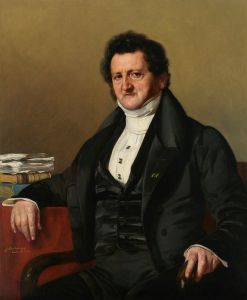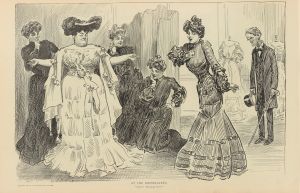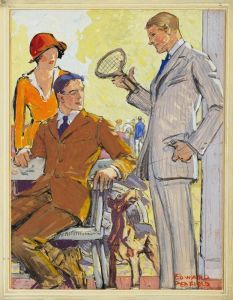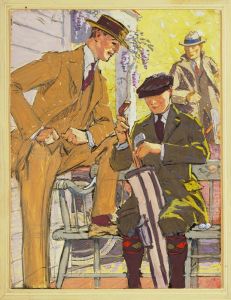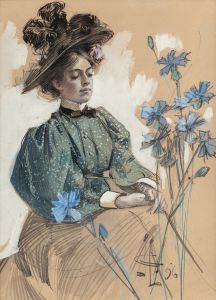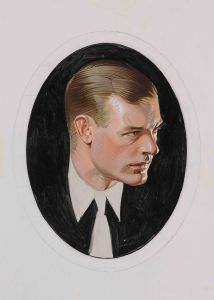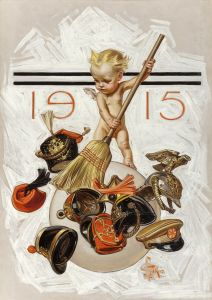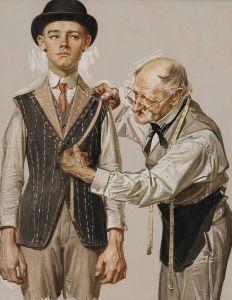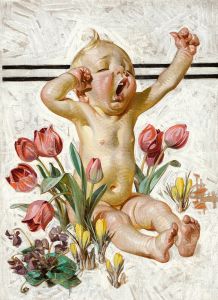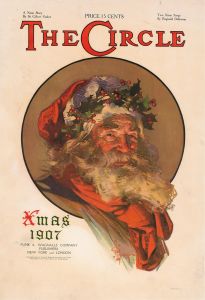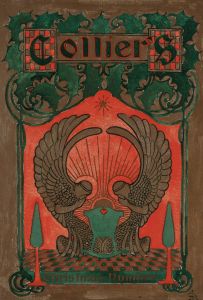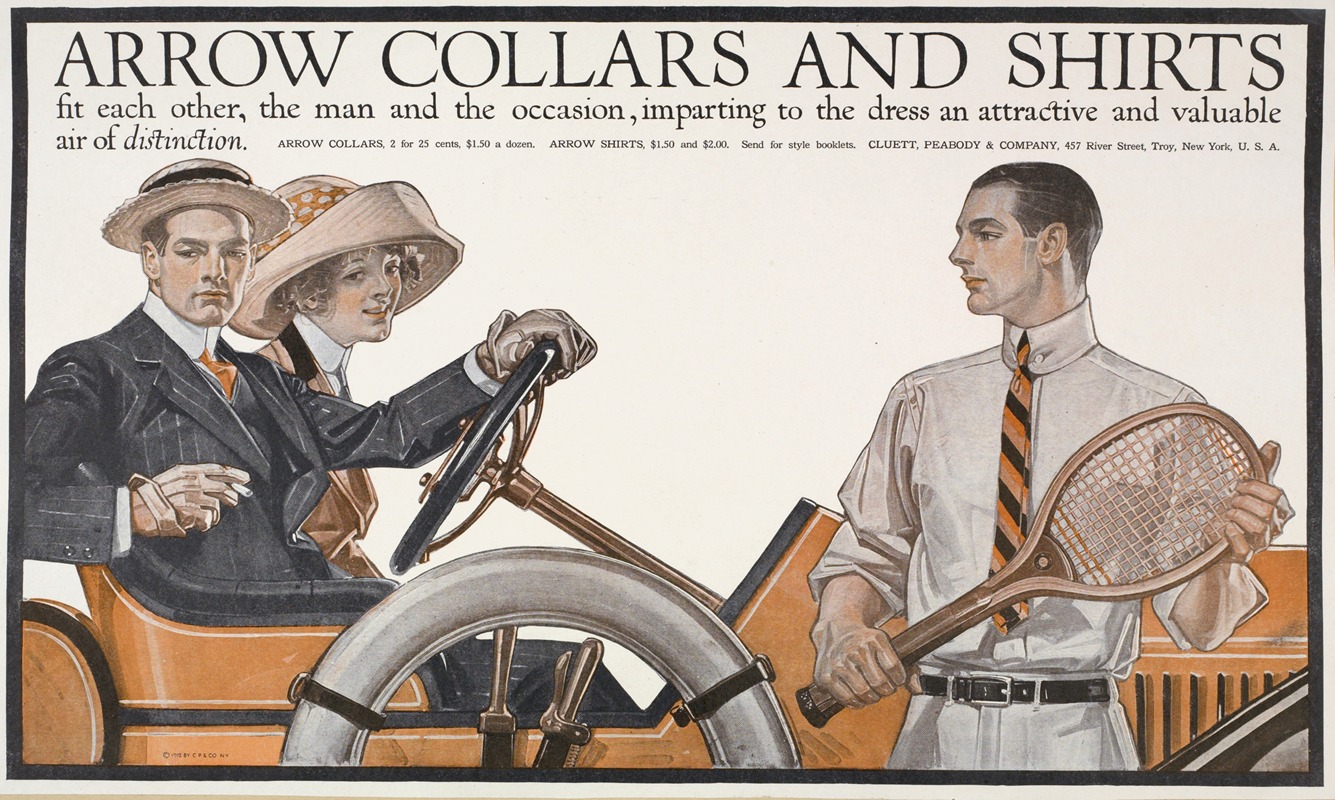
Arrow collars & shirts
A hand-painted replica of Joseph Christian Leyendecker’s masterpiece Arrow collars & shirts, meticulously crafted by professional artists to capture the true essence of the original. Each piece is created with museum-quality canvas and rare mineral pigments, carefully painted by experienced artists with delicate brushstrokes and rich, layered colors to perfectly recreate the texture of the original artwork. Unlike machine-printed reproductions, this hand-painted version brings the painting to life, infused with the artist’s emotions and skill in every stroke. Whether for personal collection or home decoration, it instantly elevates the artistic atmosphere of any space.
"Arrow collars & shirts" is a renowned series of advertisements created by the American illustrator Joseph Christian Leyendecker. Leyendecker, who was born in 1874 in Germany and immigrated to the United States with his family in 1882, became one of the most prominent and influential American illustrators of the early 20th century. His work for the Arrow brand, produced by Cluett, Peabody & Co., is among his most celebrated contributions to commercial art.
The Arrow Collar Man, as depicted in Leyendecker's illustrations, became an iconic figure in American advertising. These advertisements were created during the early 1900s, a period when print media was the primary means of reaching consumers. Leyendecker's illustrations were featured in prominent magazines such as "Collier's" and "The Saturday Evening Post," where they reached a wide audience and significantly boosted the popularity of Arrow collars and shirts.
Leyendecker's Arrow Collar Man was characterized by his clean-cut, handsome, and sophisticated appearance. The model for many of these illustrations was Charles Beach, who was also Leyendecker's partner. Beach's chiseled features and elegant demeanor embodied the ideal of masculine beauty and sophistication during that era. The Arrow Collar Man became a symbol of the modern, fashionable man, and his image was widely recognized and admired.
Leyendecker's technique and style were distinctive. He used bold lines, dramatic lighting, and a keen attention to detail to create striking and memorable images. His ability to capture the essence of the product and the aspirational lifestyle it represented made his work highly effective in advertising. The Arrow Collar Man not only sold shirts and collars but also conveyed a sense of aspiration and identity to the American public.
The success of the Arrow Collar advertisements had a significant impact on both Leyendecker's career and the advertising industry. Leyendecker became one of the highest-paid commercial artists of his time, and his work set a standard for quality and creativity in advertising. The Arrow Collar campaign is often cited as one of the earliest examples of branding, where the image of the product became as important as the product itself.
Leyendecker's influence extended beyond advertising. His work for "The Saturday Evening Post," where he created over 300 covers, helped shape the visual culture of early 20th-century America. His illustrations captured the spirit of the times, from the optimism of the post-World War I era to the changing social norms of the 1920s and 1930s.
In summary, Joseph Christian Leyendecker's "Arrow collars & shirts" advertisements are a landmark in the history of commercial art. They exemplify the power of illustration in advertising and the creation of iconic imagery that resonates with the public. Leyendecker's work not only promoted a product but also defined an era's aesthetic and cultural ideals.





